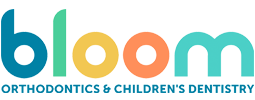As a parent, the health and happiness of your children is your top priority. Investing in preventive care and treatments can help support your young ones’ well-being. One of the common concerns parents have is whether they can afford orthodontic treatment for their children, such as Invisalign.
Many dental insurance plans in Alberta partially or entirely cover Invisalign treatment, but it depends on your specific coverage. You’ll need to check with your provider to learn how much your plan covers. Bloom Orthodontics can also provide Direct Billing to Insurance.
What Is Invisalign?
Invisalign has become increasingly popular since it was first marketed in 2000, and many people now consider it a more convenient and natural-looking alternative to traditional braces.
Invisalign aligners use clear, removable plastic trays called SmartTrack to gently shift teeth into the desired position. The clear aligners are virtually invisible, so your child can go about their day without anyone knowing they’re wearing them.
Invisalign trays are completely customized using 3D images of your child’s teeth. Each aligner is worn for around 2 weeks before being swapped out for the next set. Unlike traditional braces, there are no metal brackets or wires, making Invisalign relatively comfortable and more predictable.
What Issues Can Invisalign Correct?
Invisalign can be an effective and efficient way to address various dental issues, including:

What Does Invisalign Cost?
The cost of Invisalign can vary depending on the severity of the case, which can increase the length of treatment. Invisalign takes anywhere from 6–24 months to reach the desired results.
This time commitment may still be shorter than traditional braces, plus your child usually needs fewer dental appointments since an orthodontist isn’t needed to manually tighten any wires. Instead, when the time comes, they simply switch to the next aligner. That can save money as well.
Insurance Coverage
Orthodontic costs are usually separate from dental costs when it comes to coverage. Most insurance plans in Canada, including those in Alberta, provide some coverage for orthodontic treatment, but the amount of coverage and the terms and conditions can vary widely. Some plans have a fixed dollar amount or percentage of the cost covered, while others have a lifetime maximum or a waiting period before coverage kicks in.
To find out if your insurance plan covers Invisalign, contact your insurance provider or benefits administrator directly and ask for the details of your orthodontic coverage. Make sure to ask specific questions, such as:
- Is Invisalign covered under my plan?
- What percentage of the cost is covered?
- Is there a lifetime maximum or an annual maximum for orthodontic benefits?
- Are there any waiting periods or exclusions?
Other Options to Cover the Cost of Invisalign
Some employers offer staff flexible spending accounts (FSA) or health care spending accounts (HSA). An FSA is like a savings account to which you contribute some of your pre-tax earnings and is used to cover outstanding medical or dental expenses.
An HSA is part of a benefit plan used to “top-up” outstanding costs not covered by standard benefits plans. For example, if your standard benefits plan covers 80% of orthodontic treatments, you can use your HSA to cover the remaining 20%.
Either of these accounts can be used to cover Invisalign treatment.
The Benefits of Invisalign
Invisalign offers many benefits for a family searching for orthodontic solutions. Here are some of the reasons parents are choosing Invisalign for their kids:
- Nearly invisible: Some people feel self-conscious about the wires and brackets that come with traditional braces. Invisalign are clear, virtually transparent aligners.
- Less food restrictions: Some foods are off-limits with traditional braces. Sticky foods, hard candy, and popcorn are some common forbidden foods. But with Invisalign, your child can quickly remove the aligners to eat and then brush their teeth before putting them back on.
- Comfort: Brackets and wires can irritate gums, lips, and the inside of cheeks. It’s not unusual for children with braces to have cuts and sores inside their mouths because of the appliances. Invisalign aligners are made from smooth plastic and are less likely to cause discomfort.
- Fewer visits to the dentist: We love seeing your kids, but there’s no denying it takes time out of an already busy schedule. Metal braces require frequent dental visits for adjustments and tightening, but Invisalign doesn’t.
- Better oral health: Traditional metal braces can make brushing and flossing challenging, leading to poor oral health. Invisalign is removable, making brushing and flossing much more manageable. As a result, your child may be less likely to develop dental problems such as cavities, gum disease, and tooth decay.
Let’s Talk About Straighter Teeth
Invisalign is a popular orthodontic treatment that can correct misaligned teeth for a healthier smile. While insurance coverage for Invisalign varies from plan to plan, it’s important to explore your options and make an informed decision that works for your family’s budget and needs. Direct billing to insurance can be provided.
Bloom Orthodontics is here to help you find your way forward! We can strive to make orthodontic treatments simple and work with you to make straighter teeth achievable.Contact us today and ask if Invisalign is right for your family.


